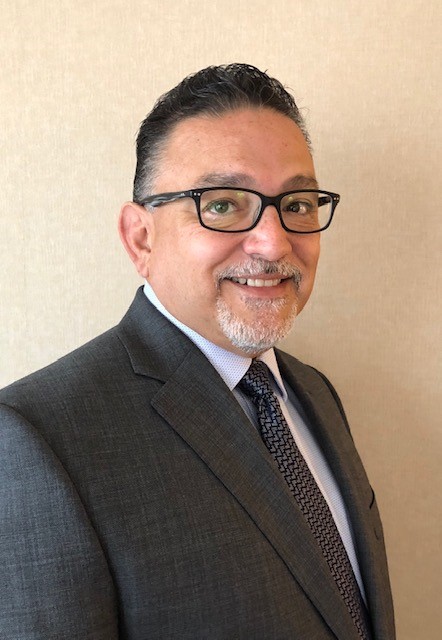Q&A with Victor Ceballos, Managing Director, Business Continuity & Crisis Management Officer
 Q. We switched to fully remote operations for the entire Bank on March 16, 2020, leaving our offices to work from home on rather short notice, and it seemed to go very smoothly. Can you tell us how you and your team pulled it off?
Q. We switched to fully remote operations for the entire Bank on March 16, 2020, leaving our offices to work from home on rather short notice, and it seemed to go very smoothly. Can you tell us how you and your team pulled it off?
The Bank’s transition to 100 percent remote operations was definitely a noteworthy accomplishment. It validated our planning for using available technology to support Bank operations from our homes. As much as I would like to take credit for our successful pandemic-dictated transition to working from home, it really was the way our team members came together that made this happen.
For the past several years, we have been planning and testing our ability to resume Bank operations from locations other than the Bank offices. Our alternative locations include a Business Recovery Center near Sacramento, a downtown San Francisco space (Mindspace), and other locations that can provide us the technical capabilities to work remotely. I was confident in our team’s ability to function outside of the Bank offices, so it didn’t surprise me that we were able to pull it off. Case in point: it’s been over a year and we are still going strong.
 Q. Apart from no longer working in the office, what other impacts have there been? For instance, I know that my fellow RMs and I have not traveled over the past year.
Q. Apart from no longer working in the office, what other impacts have there been? For instance, I know that my fellow RMs and I have not traveled over the past year.
The pandemic impacted several aspects of our personal and professional lives, from not being able to collaborate with one another as we did previously to making it necessary that we physically distance from one another.
All states, including California, have different requirements, from travel and mask-wearing to whether or not we can gather indoors for dining, entertainment or religious services. In California, and more specifically, the Bay Area, because of the increased availability of vaccine, counties have begun to remove restrictions in various sectors, including dining, fitness, entertainment, and places of worship. As vaccinations statewide surpass 20 million, the state is planning to eliminate the tiering system as part its Blueprint for a Safer Economy, on June 15. Once the state removes the tiering system, it is expected that all counties in the state will be able to open up fully, even while ensuring common sense health measures remain in place, including masking, testing, and social distancing.
In addition, our state has issued a travel advisory that asks non-vaccinated Californians to avoid non-essential travel to anywhere more than 120 miles from one's place of residence, or to other states or countries.
Q. How has the Bank’s thinking evolved about returning to the office and/or continuing to work remotely? Our San Francisco workforce is highly dependent upon public transportation. Also, our offices are in a high-rise building, with those added complications.
This question has been on everybody’s mind since the day we all left to work from home back in March 2020. The Bank’s Leadership Team is committed to putting the health and safety of our team members first. This is one of the most important guiding principles in planning for our eventual return to our offices. As we finalize the Bank’s framework for when and how we will repopulate our offices, we are applying what we have learned from staff via surveys and focus group discussions with team members across all areas of the Bank. We have gained a lot of valuable information that has helped us better understand what is important to them as we implement this approach for repopulation.
As we begin to execute on our repopulation plans, we continue to monitor the state of the viral spread in California, as well as the Bay Area. Public transportation, school re-openings, vaccine distribution and availability, as well as guidelines and requirements established by the state and other agencies, will have to be integrated into our protocols as we reopen our offices.
Q. Your team and a consulting firm have been working on a project with the title “Return to the Office and the Future of Work.” Tell us about the project and some of the key findings.
The Pandemic Response Team has partnered with Protiviti Consulting to develop a Return-to-Office Playbook with a project plan, workstream-specific checklists, and identification of any policies or guidance that may need to be updated or developed to ensure our return to office addresses all the needs of the Bank and the safety of our team members.
To ensure we are developing adequate and effective protocols and guidelines, the phases of repopulation will include a pilot stage that will have some employees who are interested in volunteering to return to the office ahead of the general staff repopulation stage – currently no sooner than October 1, 2021 – that will help us evaluate our newly developed facility protocols. No employees will be required to return prior to the October date. Although our general repopulation plan is dependent on the status of viral spread in the Bay Area as well as the general availability of vaccines for all team members, which can be a moving target, we think it prudent to ensure our Bank offices, protocols, and policies are in place prior to executing any of our stages of repopulation.
Q. So what might the future of work look like? Can you provide the most likely scenarios?
As mentioned, things will be different as we look to the future of work and the eventual return to our offices. We have all heard the phrase, “the new normal.” Whether or not we refer to post-pandemic life as a new normal may be up for discussion, but I believe we would all agree that future life in the office will be very different from what it was like pre-pandemic. I anticipate our experience in the office being different in two ways, in both what the office looks like and how we are using the space.
First, this new (or next) normal will include modifications to our facility protocols and guidelines that we will all need to follow. Some of these changes may include practicing better health habits, such as regular hand-washing, disinfecting commonly touched items, and keeping our distance from those who are not part of our regular cohort. We also, potentially, may need to make changes to the layout of the office to support physical distancing. The new normal may also change how we think of our time in the office. We may focus in-office time more on collaborative activities, rather than spending eight hours alone in our cube.
As we have read in the news lately, a lot of companies across the nation, including those in and around the Bay Area, have realized that the future of work will have to include the ability for the organization to be more flexible and better prepared. We all need to develop resiliency strategies that will help us address the next disruptive event and potential impacts on our workforce.
